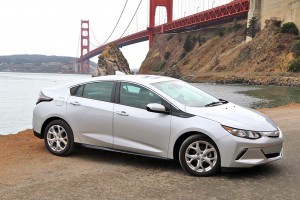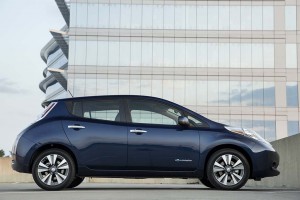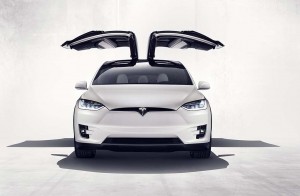After seemingly coming unplugged, the newly redesigned Chevrolet Volt has charged into the U.S. sales lead among plug-based vehicles, overtaking long-time rival Nissan Leaf.
That’s based on the likelihood that at least 10% of the demand for the Tesla Model S has come from abroad through the end of May, a strong likelihood considering the long-range electric sedan now is being marketed in a number of countries, including China and the European Union.
Even factoring out those overseas sales, and with a number of manufacturers not yet breaking out May battery-car numbers, there’s good reason for EV advocates to celebrate. After taking a tumble last year in the wake of a sharp downturn in gas prices, sales of plug-based vehicles have been recharged in recent month.
No one knows that more than the folks at Chevrolet. The first-generation Volt suffered a significant decline in demand in recent years, as it reached the end of its lifecycle. General Motors’ largest brand brought out an all-new version of the plug-in model for 2016, and that is paying off.
In May alone, Chevy sold 1,901 Volts in the U.S., according to data compiled by InsideEVs.com, a 17.5% year-over-year increase. For the first five months of the year, Volt sales totaled 7,871, a 79% jump from the 4,397 that were moved during the same period last year.
By comparison, Nissan sold just 979 of its Leaf battery-cars in May, a 53.5% year-over-year decline. And through the end of May, Leaf sales dipped 39.3%, from 7,742 to just 4,697.
A first glance at Tesla’s numbers would suggest that the Model S is still in the lead for the year to date, with sales of 8,390 of the Model S sedans, or 519 more than for the Chevy Volt. But the figure has to be taken with caution considering it is a worldwide, rather than U.S. number. Even if just 6% of that figure came from abroad — a strong likelihood — Tesla would lose the lead.
(Tesla Model 3 owners will have to pay to use maker’s high-speed Superchargers. Click Here for that story.)
And Model S worldwide sales for May were a relatively meager 1,200, which means that U.S. numbers may have slipped behind those of the Nissan Leaf. Tesla has so far not responded with clarification.
Significantly, after a painfully slow start, the newer Tesla Model X is building momentum. Worldwide sales were 1,600 in May, and 4,850 for the full year.
Ford has not yet reported May numbers for its own plug-in hybrid, the Fusion Energi, but with sales of 4,082 from January through April, it has a very good chance of topping Leaf, as well.
Nissan has lost momentum despite getting a 27% boost in range, to 107 miles between charges, for the 2016 model-year. But that’s no surprise. The pure battery-electric vehicle, or BEV, was launched about the same time as the original Chevrolet Volt, in late 2009, and it is coming close to a major makeover expected to see its range move closer to 200 miles.
(Tesla may build its own gigafactory battery plant. Click Here for the latest.)
Many experts believe that’s the magic number that will better position BEVs as a true competitor to gasoline-powered vehicles. That’s the figure the new Chevy Bolt and Tesla Model 3 vehicles are targeting, and Ford last month said it is aiming for similar range for an as yet unidentified new model.
Tesla, in fact, is so confident about that longer range and an affordable price tag starting at $35,000 that it is betting its overall production will reach 500,000 by 2018. The Model 3 is expected to account for more than three-quarters of that output.
Looking back at 2015, such an ambitious target would have seemed an unrealistic stretch. After growing for much of the decade, demand for hybrids, plug-ins and BEVs dipped notably. But the trendline is back on the rise. According to InsideEVs data, sales totaled at least 46,019 last month – though that figure includes global Tesla numbers and doesn’t yet factor in Ford’s various plug-ins and the Focus EV, nor plug-based models from BMW, Hyundai, Kia. Porsche, Smart or Volvo, as well as the Chevy Spark EV.
Even including those various models in the industry total through the end of May 2015, automakers sold just 43,983 plug-based models.
Why the upturn? A variety of factors could be in play, including the upgrade of key models like Volt. Another factor may be the recent rise of gasoline prices.
(Click Here to see why Tesla is looking to raise $2 billion with a new stock offering.)



